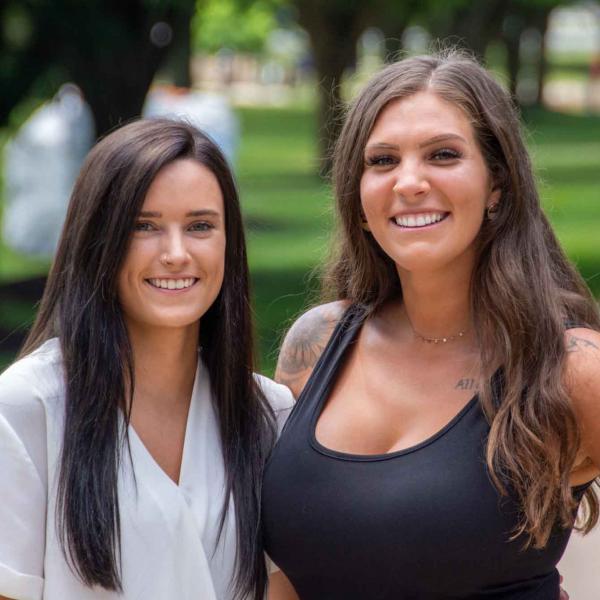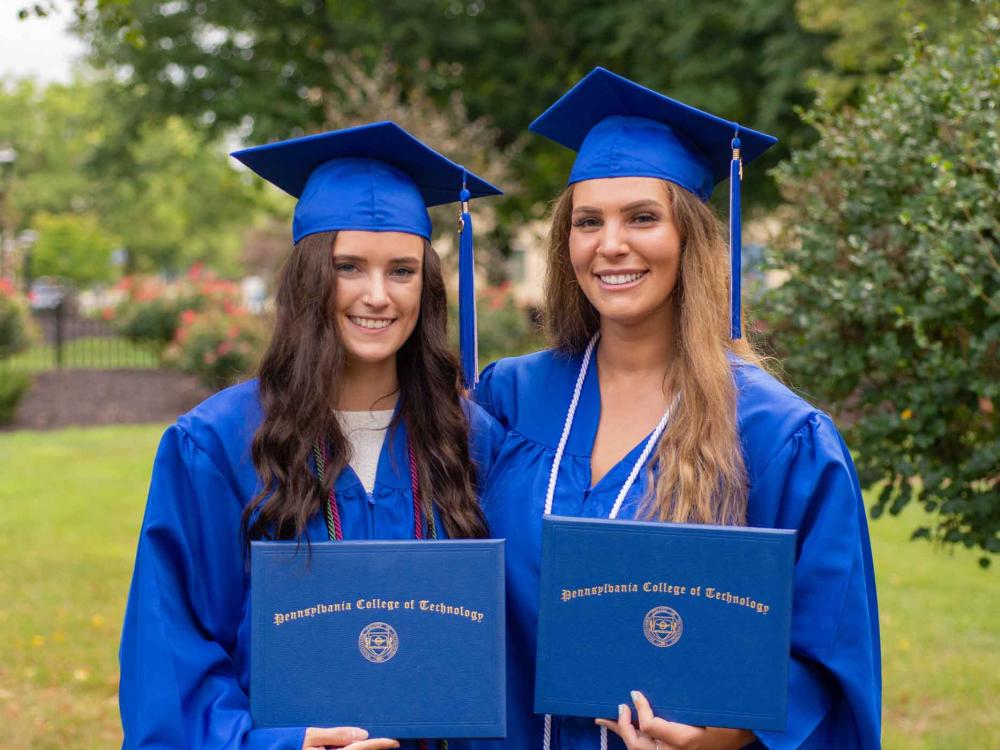Kierstin & Marissa Bathurst
- Alumni
- Radiography
Nothing breaks the bond shared by sisters. Kierstin and Marissa are proof. Their paths to Penn College were unique. But once they arrived, their journey became one. From earning seats in the same cohort to sticking together through late-night study sessions, hands-on labs, and clinical rotations, this unstoppable duo challenged, motivated, and supported each other every step of the way.

Leading the Way
Q&A with Kierstin & Marissa
WHAT MADE YOU CHOOSE TO STUDY RADIOGRAPHY?
Kierstin: I was in a motorcycle accident in 2014. I ended up in a Philadelphia hospital for a month and had 14 surgeries. I was in an external fixator; they had to move me around, and it was painful. The X-ray people made sure to make me as comfortable as they could. The made me feel at ease, joked around the whole time, and were very personable. I got to watch my leg heal through X-rays, and that was cool, too.
Marissa: I originally went to school for nursing. I knew I wanted to go into healthcare. Like most high school students, I automatically thought of nursing. But when I got into it, I knew right away it wasn’t for me. I researched radiography. The more I learned, the more I thought it was the right fit. It involves a lot of physics and math, which are my strong suits.
WHAT DO YOU LIKE MOST ABOUT RADIOGRAPHY?
Kierstin: Because of what I've gone through, I can connect with what the patients are feeling and help them through it. And the work is different every day.
Marissa: There are so many options in this career. You can go into CT, MRI, nuclear medicine, cardiac catheterization, radiation therapy, or ultrasound. But even in X-ray, there's not just one place you could work. You could work in a hospital, an OR, urgent care, orthopedics, or more.
HAS THE COVID-19 PANDEMIC CHANGED THE WAY YOU THINK ABOUT RADIOGRAPHY?
Marissa: As bad of a thing as COVID-19 is, it built my confidence. As soon as we went back to the hospital to finish our clinicals, I realized I remembered everything. It made me feel ready to go out into the field and start my life as an X-ray tech.
HOW HAS THE MIX OF PRACTICAL EXPERIENCE AND THEORY HELPED YOU?
Kierstin: Some programs do all their classwork before they go to clinic. The way the program is done here (we learn about a body part, then we go to a clinical site and take an image of that body part on a real patient) definitely helps us to learn better.
Marissa: The students complete clinical rotations at three hospitals. Going to different hospitals has helped us to adapt more quickly, which will help us when we do get a job.
IF SOMEONE WERE INTERESTED IN PENN COLLEGE, WHAT MIGHT YOU TELL HIM/HER?
Kierstin: You have to always be working for it. But it’s nice to get close to the other students.
Marissa: There are 30 people in the cohort. We take all our classes together, and we do rotations with the same 10 people throughout our two years. We’re all kind of one big family at this point.
CAN YOU TELL US ABOUT THE RELATIONSHIP YOU HAVE WITH FACULTY AND/OR THE PENN COLLEGE FAMILY?
Kierstin: All of the radiography program faculty and staff are wonderful! Karen Plankenhorn (clinical supervisor) has helped us tremendously throughout the program. She always goes the extra mile. Honestly, I don’t think we would have made it without her.

Tomorrow Makers
Sisters share journey to radiography degrees
The Bathurst sisters, both petitioning to receive associate degrees in radiography, have spent a great deal of time together over the past two years, motivating each other through their natural affinity for competition, helping each other via last-minute cram sessions before exams, and supporting each other with pep talks before hands-on evaluations.
Programs
Radiography
Hone the skills you need to dive in to a rewarding career in healthcare.
All Programs
Unsure which major is right for you? See all academic programs at-a-glance.
